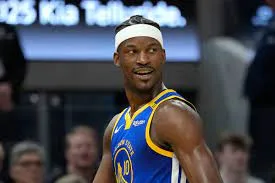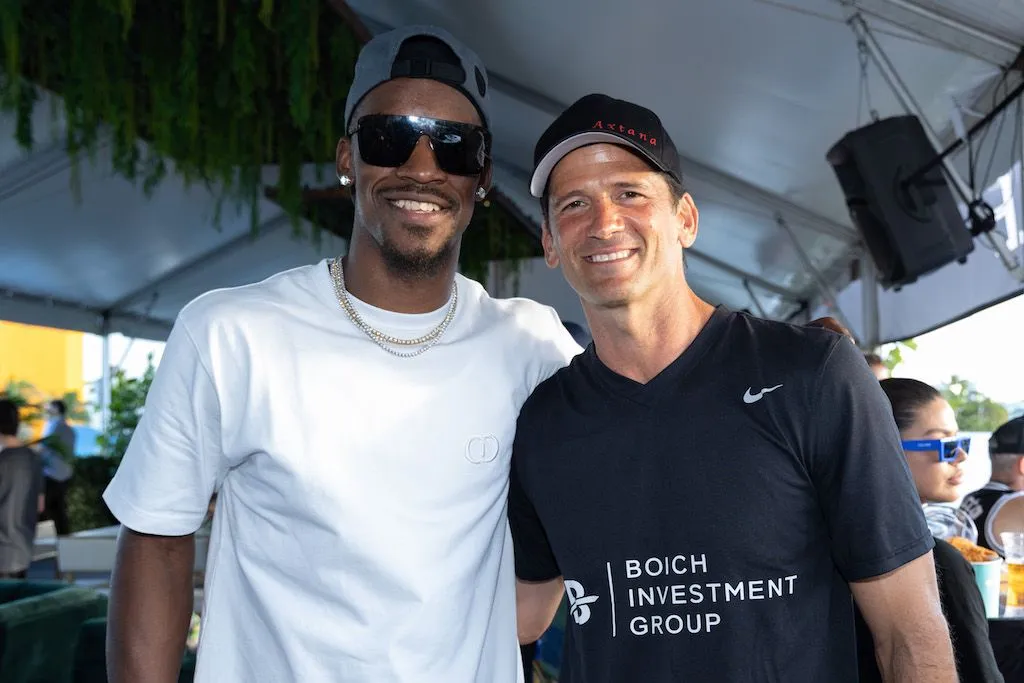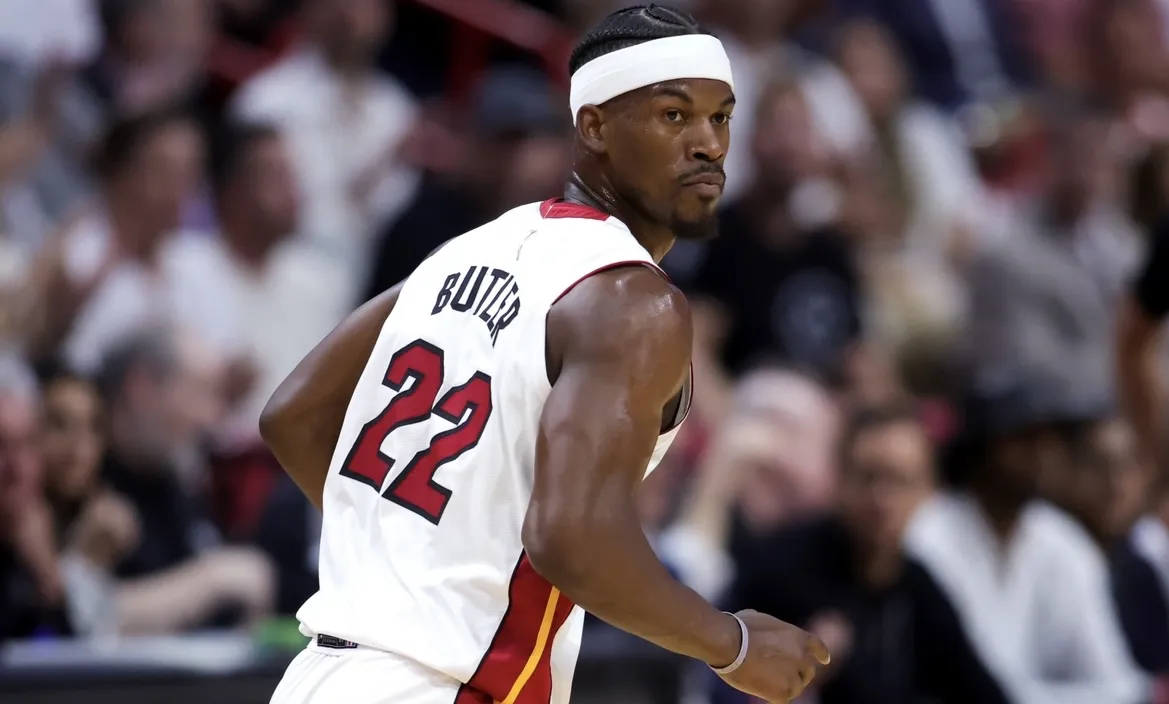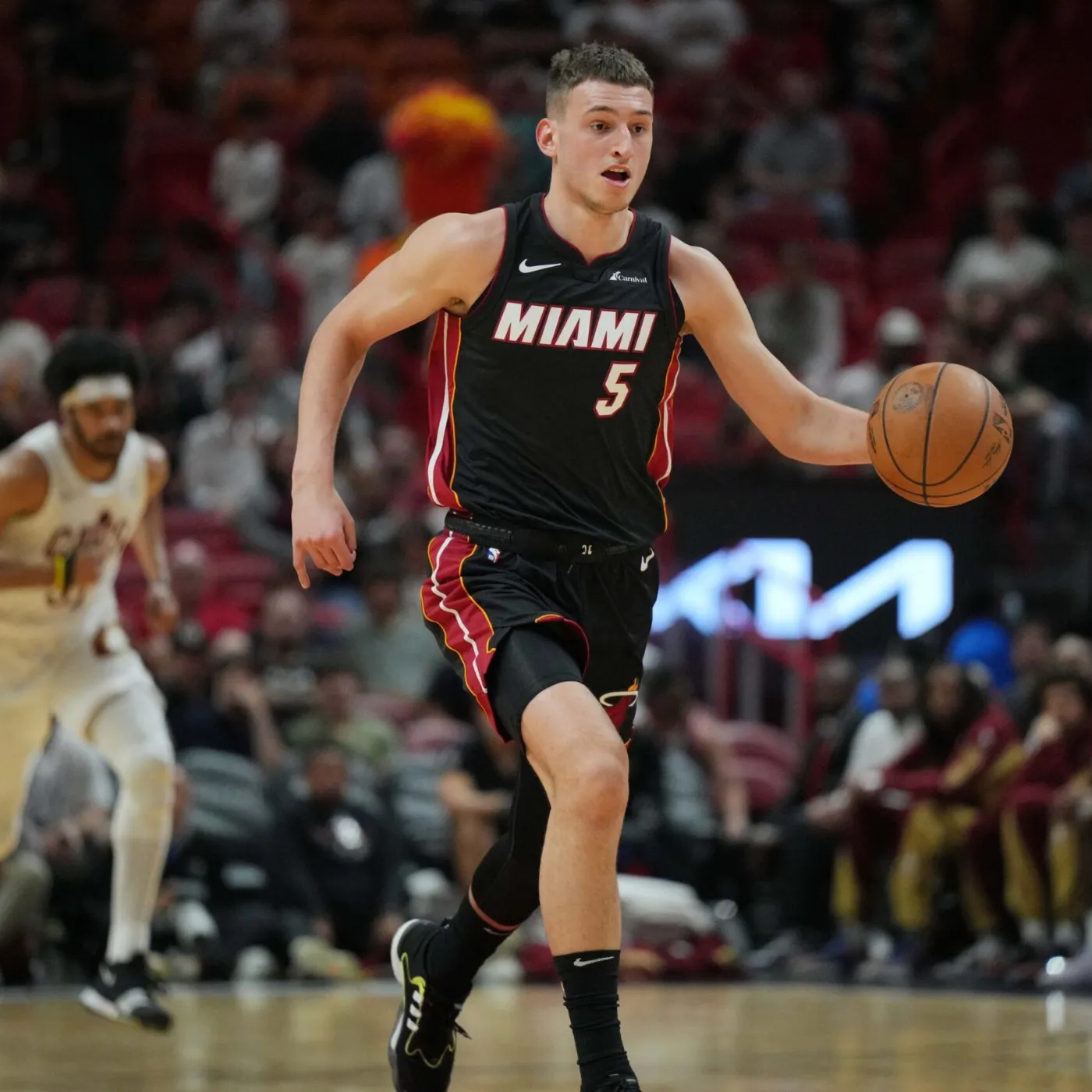

Jimmy Butler Ditches Basketball for Padel to Push His Limits – Revealing His Top Secret for the New NBA Season!
Jimmy Butler, one of the most dynamic and unpredictable stars in the NBA, is entering his 15th season with a twist in his training routine that has left fans and analysts buzzing. Known for his relentless work ethic, Butler is now embracing padel, a fast-growing racquet sport that blends elements of tennis and squash, as part of his preparation for the upcoming season. While many players stick to traditional basketball workouts, Butler’s approach is anything but ordinary.
At 36 years old, Butler is showing no signs of slowing down. His decision to train with padel is not a mere hobby or social activity; it’s a calculated move to enhance his athletic performance, hand-eye coordination, and on-court reflexes. In recent months, he has traveled to Spain to participate in high-level padel events, using the intense sport to sharpen the same skills that make him a force in the NBA.
Padel may sound unusual to the casual sports fan, but for Butler, the benefits are clear. The sport requires quick pivots, rapid reactions to balls bouncing off walls, and constant movement—skills that directly translate to basketball. Fans who have watched Butler dominate on both ends of the court may soon understand that his agility, anticipation, and split-second decision-making could now be refined in an entirely new environment.

Why Jimmy Butler Chose Padel
The reasoning behind Butler’s new training obsession is straightforward. He wants to maintain peak performance in a league where even a slight edge can make the difference between a first-round exit and a championship run. The NBA season is grueling, with 82 games plus playoffs, and Butler knows that innovation in training can provide him with the competitive advantage he needs.
Unlike standard basketball drills that focus on shooting, dribbling, and conditioning, padel engages multiple muscle groups, improves reflex speed, and strengthens lateral movement. Butler’s commitment to this sport demonstrates a growing trend among elite athletes who cross-train in unconventional ways. By exposing himself to different physical demands, he hopes to remain explosive, versatile, and injury-resistant throughout a long season.
Impact on On-Court Performance
Butler’s stint with the Golden State Warriors last season offered a glimpse into his ability to adapt quickly. After arriving mid-season, he averaged 17.9 points, 5.5 rebounds, 5.9 assists, and 1.7 steals per game, helping the Warriors achieve a remarkable 23-7 record with him in the lineup. Analysts credited his immediate impact to not only his natural talent but also his dedication to staying in top physical and mental condition.
Now, entering a full season in the Bay Area, Butler is taking training innovation to another level. Padel helps improve court vision, timing, and explosiveness, all of which are critical to his role as a guard-forward hybrid. By mastering the fast-paced exchanges and unpredictable ball trajectories in padel, Butler is training his brain and body to react instinctively on the basketball court, enhancing his ability to read plays, intercept passes, and make game-changing decisions in a split second.

The Science Behind Cross-Training
Sports scientists increasingly recognize the value of cross-training in developing elite athletes. Engaging in a sport like padel introduces neuromuscular adaptations that are difficult to achieve through standard basketball practice alone. It challenges balance, coordination, and agility in unpredictable ways. For Butler, this is an investment in longevity. At 36, maintaining peak performance requires more than just hours in the gym—it demands strategic, sport-specific conditioning that can withstand the rigors of a full NBA season.
Moreover, padel’s rapid exchanges require players to constantly shift weight and adjust stance, mirroring defensive and offensive movements in basketball. The mental acuity gained from anticipating ball bounces and reading opponents’ actions translates seamlessly to navigating fast breaks, defending elite scorers, and exploiting openings on the floor. Butler’s focus on these cognitive and physical aspects could redefine how veteran players approach offseason preparation.
What This Means for the Warriors
Golden State fans can expect a Butler who is not only sharper physically but also more unpredictable mentally. His commitment to cross-training sends a message that he is willing to innovate to maintain an edge over competitors. With the Warriors aiming for a deep playoff run, Butler’s unique regimen could be the X-factor that separates the team from other championship contenders.
Additionally, Butler’s experimentation with padel may inspire teammates to explore alternative training methods, fostering a culture of creativity and resilience. The potential ripple effect could improve team-wide performance, with each player discovering new ways to enhance agility, reflexes, and endurance.
Beyond the Court: The Lifestyle Factor
Butler’s dedication to padel also highlights the importance of a balanced and engaging offseason routine. High-level athletes often face burnout if their training lacks variety or mental stimulation. By incorporating a sport that is both challenging and enjoyable, Butler is likely preserving his motivation while enhancing performance. This approach aligns with modern sports psychology principles, which emphasize that diverse physical and cognitive challenges can prevent stagnation and increase overall athletic longevity.

The Future of Padel in Professional Basketball
Butler’s adoption of padel may also signal a broader trend in professional basketball. As athletes search for innovative ways to gain an edge, unconventional sports like padel could see increased popularity among NBA players. The benefits are clear: improved reflexes, hand-eye coordination, lateral movement, and mental sharpness. For teams willing to support these alternative training methods, the potential rewards could be game-changing, particularly during tight playoff contests where fractions of a second determine outcomes.
Conclusion
Jimmy Butler is not content with following the status quo. By turning to padel as part of his basketball preparation, he demonstrates an innovative mindset that could redefine how veteran NBA stars approach training. From improving reflexes and coordination to maintaining mental sharpness, Butler’s unconventional methods offer a glimpse into the future of athletic preparation.
As the Warriors gear up for the new season, one thing is certain: Butler’s commitment to cross-training is not a gimmick—it’s a calculated strategy to stay ahead of the competition. Fans, analysts, and fellow athletes alike will be watching closely to see if this bold move translates to even greater on-court success.
Whether this approach becomes a trend across the league remains to be seen, but one thing is undeniable: Jimmy Butler is still finding ways to push the limits of performance, innovation, and endurance. And with padel now part of his arsenal, the 36-year-old star is ready to take his game—and the Warriors—to new heights.


















